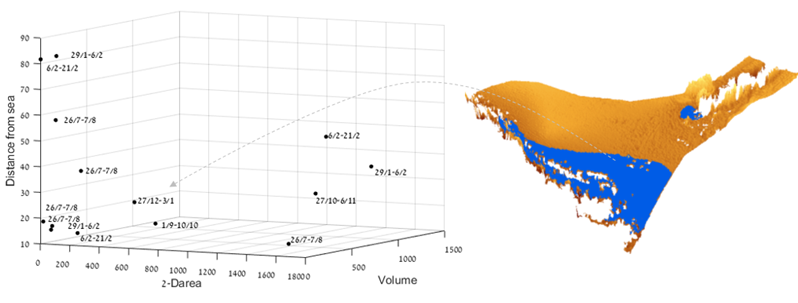In recent years, the demand to environmental information has increased, environmental data in high resolution with emphasis on high quality. The ability to obtain multiple data in a wide range of environmental fields such as ecology, geology, atmospheric sciences and air quality, city management and environmental management. The acquisition of data and the construction of databases place the great need to manage all existing information, thus providing a response in areas that involve the process of environmental consulting and management of environmental information. The many requirements in the environmental fields information management emphasize the many constraints such as real-time management of information and a response to many issues. Have the need to ensure that existing information is relevant and give all the solutions in issues management and environmental consulting. At the same time, proper management of information makes it possible to meet many demands, with a broad emphasis on decision making with environmental impact, management of economic, social and ecological systems. To enable cross-domain integration and the implementation of environmental information management models, actions must be undertaken in a manner that suits both scientific needs and provides the conceptual and technical structures needed to manage environmental knowledge.
GIS systems for environmental applications provide a practical introduction to the principles, methods, techniques and tools of the GIS platforms for spatial data management, analysis, modeling and imaging and their implementation in environmental problem solving and decision making. The GIS covers the basic concepts that emphasize the principles and techniques in spatial data management and analysis. The environmental consultant world makes extensive use of the GIS platforms to manage the environmental data collected directly from the environment through a variety of technological methods such as aerial photography and a wide range of techniques in the field of environmental review.

The more information is interpreted, and the geographic boundaries are breached, the greater the need to use spatial information systems to view and retrieve information data from various fields linked to coordinate systems. The ability to manage environmental information enables the provision of a solution in the field of environmental consulting in a manner that bridges the various environmental fields to achieve many solutions in the environmental world. This creates a greener future with a great balance between the ecologies systems and the social and economic needs.
GIS definition
The Geographic Information System (GIS) is a computerized information system that enables management and planning, primarily for spatial environmental purposes, by analyzing geographic information by combining content from several layers of information (vector information, values matrices and tables). These systems capture, organize and control data, along with the processes of emission and production of geographic information in a wide variety of visual products.
Types of GIS Data
GIS data can be separated into two categories: spatially referenced data which is represented by vector and raster forms (including imagery) and attribute tables which is represented in tabular format. Within the spatial referenced data group, the GIS data can be further classified into two different types: vector and raster. Most GIS software applications mainly focus on the usage and manipulation of vector geodatabases with added components to work with raster-based geodatabases. Vector data is split into three types: polygon, line (or arc) and point data. Polygons are used to represent areas such as the boundary of a city (on a large-scale map), lake, or forest. Raster data (also known as grid data) represents the fourth type of feature: surfaces. Raster data is cell-based, and this data category also includes aerial and satellite imagery. There are two types of raster data: continuous and discrete.
.jpg)
GIS application
Systems of this type are used by many agencies, including government ministries, research institutes, service providers, shipping companies, city planners and infrastructures, environmental consulting processes and more. These systems have an advantage in simplifying and illustrating spatial phenomena and providing effective alternatives to decision makers. GIS systems enable sharing and exporting of information in many ways. Many geographic information is available online with online GIS systems, and is also accessible on various mobile devices.
